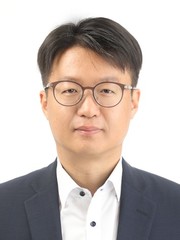Hanyang University
College of Engineering
 NewsFaculty
NewsFaculty
Faculty
| Developing Display Semiconductor Devices with Lower Cost and Power Consumption | |
|---|---|
|
작성자 : 한양대학교 공과대학(help@hanyang.ac.kr) 작성일 : 23.05.24 조회수 : 122 URL : |
|
|
Expected to be applied to the ultra-high-resolution mobile display industry Professor Jeong Jae-kyeong’s team, at Hanyang University's School of Electronics Engineering, has developed an "oxide semiconductor channel transistor device" that can significantly lower production costs and power consumption compared to existing display semiconductor devices, Hanyang University announced on March 22. The highest-specification smartphone models such as the iPhone 14 Pro and Galaxy S23 Ultra, are equipped with LTPO (Low-Temperature Polycrystalline Oxide) OLED technology that can implement ultra-high-resolution displays and drastically reduce power consumption. LTPO is a technology that complements and combines two semiconductor channel processes, LTPS (low-temperature polycrystalline silicon) with high electron mobility but high leakage current, and IGZO (amorphous oxide) with low electron mobility but low leakage current. However, there is a disadvantage that it costs a lot of money due to the high difficulty of the combination process. Through this research, Professor Jeong's team developed a semiconductor channel transistor device that can overcome the shortcomings of LTPO and IGZO at the same time. As a result, the manufacturing process can be greatly simplified by replacing the method of combining the two semiconductor channels in the existing LTPO process with a single channel method. The research team used metal catalysts to effectively grow "cubic spinel crystal oxide channel materials" at low temperatures below 300 degrees Celsius. The spinel oxide transistor device manufactured through this showed the world's best field effect mobility (>80 cm2/Vs) and excellent on/off current ratio. At the same time, it was confirmed that the most important electrical reliability for the application of display devices was also high. The technology from Professor Jeong's team is expected to significantly reduce the cost of manufacturing display transistors, as well as significantly lower power consumption. Professor Jeong predicted, "It will be able to be used in the cutting-edge, low-power, and ultra-high-resolution mobile display industries in the future." This study was conducted with the support of the Ministry of Trade, Industry and Energy's Industrial Technology Innovation Project and Samsung Display, and the results of the study were published in March in Small Methods, (IF = 15.367), a world-renowned journal in the field of materials.
Kim Kwang-bok, a researcher (doctoral degree) at Hanyang University's School of Electronics Engineering, participated in the paper as the first author.
Professor Jeong Jae-kyeong
Figure explaining the characteristics of "Cubic Spinel Crystalline Oxide Channel Material" developed by Professor Jae-kyeong's team |
|
| 이전글 | AI Technology that Understand Silent Speech Is Developed |
| 다음글 | Maximizing the Performance of AI Semiconductor Core Devices |
|
|


